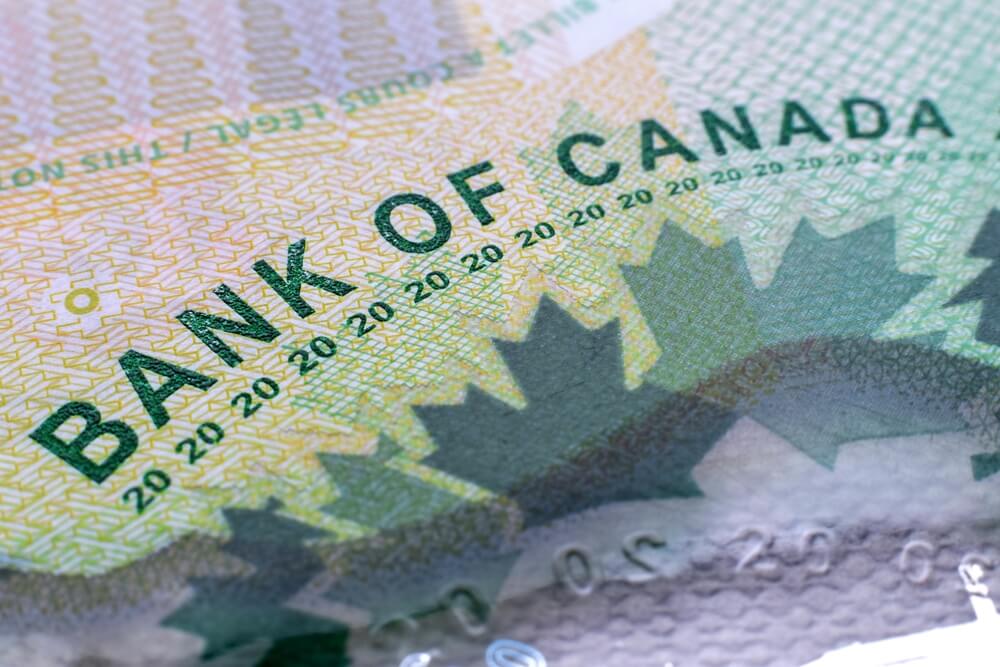How Reverse Mortgages Work
Find out how reverse mortgages work, who's eligible and how to get one.
What is a reverse mortgage?
A reverse mortgage is a way to convert your home equity into tax-free cash. It’s a essentially loan available to homeowners 55 or older.
Reverse mortgages are different from regular mortgages or credit lines in that no payments are required until you no longer live in the property.
You’re in control
You are never forced to move or repay a reverse mortgage, as long as you keep the home in a reasonable state of repair and pay your property taxes and home insurance.
Most importantly, you’re guaranteed to never owe more than your home is worth at the time it is sold.
Reverse mortgage uses
Reverse mortgage proceeds can be used for virtually anything. You can:
- Eliminate debts
- Make home improvements
- Help your children or grandchildren
- Make a special trip or purchase
- Buy a home
- Use it as a down payment on another property
- Use it for living expenses to reduce taxable income and avoid government pension clawbacks.
How does a reverse mortgage work?
A reverse mortgage is a loan where the lender pays you cash, and you don’t have to pay it back until you leave your home.
You will never owe more than your home is worth.
Nor can the lender force you out of your home, so long as you keep maintaining the property and paying your property taxes and home insurance.
The amount of money you get is a function of your age, equity, location and property type.

Quick facts about reverse mortgages
Key details about reverse mortgages:
- Minimum age: 55 (for all applicants)
- Minimum home value: $150,000
- Minimum time to close: 3-4 weeks
- Average reverse mortgage amount: $175,000
- Average age of a reverse mortgage customer: 72
- Average equity left when the home is sold: ~50% *
- Average days to close a reverse mortgage: 24-30
- Number of people aged 55+ with no retirement savings: 1 in 4 * *
How do I qualify for a reverse mortgage?
Qualifying for a reverse mortgage is easier than almost any other large loan. You basically need to:
- be 55 or over (if married, both must be 55+)
- own a marketable property that is your principal residence
- have sufficient equity
- have enough income to cover your property taxes and home insurance
Reverse mortgages are right for many, but not all. There may be lower cost alternatives, particularly if you can afford a monthly payment. It’s best to use an independent professional advisor who’s not wed to one lender or product. That way, you’ll get objective insight about all alternatives.
Got a question? RATESDOTCA has teamed up with intelliMortgage (FSRA license# 12326) for the most comprehensive reverse mortgage advice in Canada. For more information, please contact Doug Boswell via email.
What are reverse mortgage penalties?
Reverse mortgage lenders levy prepayment charges (a.k.a. “penalties”) if you pay back your reverse mortgage too early.
Here’s a quick overview of the prepayment penalties that apply at Canada’s two biggest reverse mortgage providers:
| Prepayment Year | Equitable Bank | HomeEquity Bank |
|---|---|---|
| Year 1 | 5 months’ interest | 5% of balance |
| Year 2 | 4 months’ interest | 4% of balance |
| Year 3 | 3 months’ interest | 3% of balance |
| Years 4-10 | 3 months’ interest | 3 months’ interest |
| Year 11 | No charge | 3 months’ interest |
As you can see, Equitable Bank has a superior penalty policy to HomeEquity Bank (as of the time this is being written).
Other notes:
- Penalties are generally waived upon death of the last applicant
- Penalties may be reduced (by up to 50%) if moving into a long-term care facility
- Penalties may or may not apply if you are refinancing (requesting more funds). Confirm with the lender.
- After five years, penalties usually don’t apply if you pay off the reverse mortgage at the end of a term.
Comparing a HELOC to a reverse mortgage
A home equity line of credit (HELOC) lets you borrow and pay back any amount of money, at any time, up to your approved limit. This is a revolving loan secured against your home.
Whereas most HELOCs require monthly interest payments from a separate bank account, the best HELOCs for seniors don’t require regular out-of-pocket payments. Instead, the payments can be capitalized, meaning the line of credit makes your interest payments for you. In this way, it’s somewhat similar to a reverse mortgage but at a much lower interest rate.
The other benefit of a HELOC is that you pull money out only when needed. Most reverse mortgages require you to pull out a big lump-sum at closing. In other words, in addition to having a lower interest rate, a HELOC calculates your interest on a smaller balance—saving you interest in two ways.
The best way to find a seniors-optimized HELOC is to talk with an experienced equity release specialist that represents multiple lenders. These specialized HELOCs are different in these important ways:
#1) Savings: The senior-friendly HELOC saves you up to 2.29 percentage points versus a 5-year reverse mortgage. That’s more than $11,000 of interest saved over five years, per $100,000 borrowed.
#2) Payment Capitalization: A HELOC doesn’t require monthly interest payments. Simply deposit your income into the account each month, just like you would with a regular chequing account.
#3) Convenient Banking Included: The leading senior-friendly HELOC lets you enjoy unlimited online banking for just $9.95 per month. No-fee HELOCs are also available if you don’t need the interest capitalization feature.
#4) Loan-to-value Management: HELOCs can be an excellent alternative to reverse mortgages, but only if they’re set up properly. Ask your advisor to configure the HELOC to ensure you can safely refinance out of it later. That way, you don’t have to worry as much if you’re forced to miss a payment payments (because you can refinance to pay out the HELOC using a reverse mortgage).
HELOCs are not without downsides and risks, however. For one thing, you have to qualify and make a monthly payment. You also need to be aware that if your spouse dies and you can’t debt service the HELOC by yourself, the lender may call it in (i.e., force you to pay it off, potentially forcing you to sell your home if you can’t get replacement financing).
What is a seniors mortgage?
For most seniors who need equity release to generate cash, a mortgage is not an option. Regular mortgages require qualification and monthly payments.
But there are certain mortgages that are far easier to qualify for. Some even provide interest reserves so you’re not out-of-pocket the monthly payments.
The main time you might consider a mortgage is when a reverse mortgage won’t provide enough financing, you can’t qualify for a HELOC and/or the best available reverse mortgage rates are too high.
Tip: If you do get a mortgage but want to minimize the payment, consider extending the amortization or getting an interest-only mortgage. Just be aware that this tradeoff for better cash flow is higher overall interest expense.
Frequently asked questions about reverse mortgages
How much money can I qualify for?
An advisor can confirm your exact borrowing limit after asking a few basic questions. The main factors that determine how much you’ll be approved for include:
- Age (the older you and your spouse are, the more you can get)
- Home value (the more your home is worth, the more you can get)
- City (less liquid real estate markets result in lower mortgage sizes)
- Type of home (detached homes qualify for more money than condos)
What are the eligibility requirements?
A reverse mortgage requires that you:
- Be at least 55 years old (the same goes for your spouse)
- Own a marketable home with sufficient equity
- Keep your property taxes and home insurance up to date, and your property maintained.
How much are my payments?
Reverse mortgages have no required payments until you (and your spouse, if married) leave the home.
What are the costs (fees)?
- Appraisal*: $300-600 (varies by lender, location and property type)
- Independent Legal Advice: $400-600 (approx.)
- Setup Fee: $1,795 / $2,495 (CHIP reverse mortgage / Income Advantage) or $995 (PATH reverse mortgage)
- Legal Fees: $800 (applies to the Equitable reverse mortgage making it roughly equivalent overall to CHIP)
These figures are ballparks and can vary. You’ll want to confirm with the provider.
How long does it take?
A reverse mortgage can be closed in roughly 30 days or less, assuming you have all the documentation available and arrange for a quick appraisal.
What are the rates?
Rates depend on the term, location, the loan type and your qualifications. Here are the latest reverse mortgage rates in Canada.
What if I can’t pay?
Reverse mortgages require no repayments until the applicants leave the home.
You do have to pay the home maintenance costs, property taxes and home insurance, however. If you don’t, your reverse mortgage could be called in.
What are the tax implications?
Funds you receive from a reverse mortgage are not taxable income.
If you use the funds to generate income, you might even be able to write off the interest on your income tax return. Speak to a licensed financial advisor to confirm.
What if I already have a mortgage?
If you already have a mortgage and want a reverse mortgage, you must use part of the reverse mortgage proceeds to pay it off. That assumes you can qualify for a big enough reverse mortgage to pay out the entire existing mortgage.
Note: Credit lines and second mortgages are another option. But they always require payments and often have higher rates than first mortgages. Often the rate premium for a second mortgage is 3-6% or more. The benefit of a credit line or second mortgage is that you can leave your existing mortgage untouched. Of course, the qualification standards for a credit line or second mortgage are far higher than a reverse mortgage.
Do I need good credit?
No. Good credit is not required for a reverse mortgage but if your credit score is under 630, you may be required to prove you have sufficient income to pay your property taxes, maintenance, and home insurance.
Could I owe more than my house is worth?
With a reverse mortgage, you will never owe more than your home is worth.
Furthermore, 99% of reverse mortgage clients end up with equity left over when they pay off their reverse mortgage. (Source: HomeEquity Bank.) Statistically, the average amount left over is more than 50% of the property value. That’s true for two reasons:
The initial loan limit is conservative at 15-55% of your home value
Most homes continue to rise in value (over the long run you can assume home values will grow at the rate of inflation or more).
What if I move?
If you sell your home, any financing you have on the property (reverse mortgage, HELOC or mortgage) must be paid off.
If you’ve got a regular or reverse mortgage and are buying a new home, you can generally port the mortgage to that new home, thus, avoiding penalties. Certain qualification criteria must be met, however, so inquire with the lender for complete details.
Do I get all the money at once?
The timing of your funds depends on what financing you get.
With a Reverse Mortgage you can take:
- a lump sum at closing (minimum $20,000 to $25,000)
- Note that Equitable Bank offers a “Lump Sum” reverse mortgage product that only disperses funds in a single payment. The reverse mortgage rates for this product are materially lower than competing products, including its “Flex” line of reverse mortgages, where funds can be received in instalments.
- monthly planned advance (minimum $500 to $1,000 a month)
- single advances anytime you like (minimum $5,000 to $10,000)
- Both Equitable Bank and HomeEquity Bank charge a $50 fee for unplanned advances, as of the time this is being written.
Can I use a reverse mortgage to buy a home?
Absolutely. If you want to buy a new property and make no mortgage payments, a reverse mortgage might be a fit.
Just remember that you will need a large down payment (at least 45% to 75% depending on your age, location, etc.).
In some cases, a lower cost mortgage or HELOC might be a better fit, assuming you capitalize the payments — i.e., use the loan proceeds to make the payments.
Some clients even use a reverse mortgage to buy a second home, sometimes for a family member.
How much interest will I pay?
The interest you pay is mainly a function of the type of financing, the interest rate, compounding and the amortization.
It’s not possible to quote one number for everyone. For an exact estimate, contact an experience reverse mortgage advisor and ask them to calculate the total borrowing cost for you. They can then make a recommendation as to which financing solution is most economical given your specific requirements.
Got a question? RATESDOTCA has teamed up with intelliMortgage (FSRA license# 12326) for the most comprehensive reverse mortgage advice in Canada. For more information, please contact Doug Boswell via email.
Who typically gets a reverse mortgage?
Anyone who:
- Needs cash
- Owns a marketable home with sufficient equity
- Wants to stay in that home indefinitely
- Doesn’t want to make payments
- Wants the easiest possible approval process
- Has no lower-cost options.
The average age of a reverse mortgage borrower is 72, but clients as young as 55 can also enjoy the benefits of a reverse mortgage.
How long do I have to repay?
You don’t make any repayment until you no longer live in the home.









